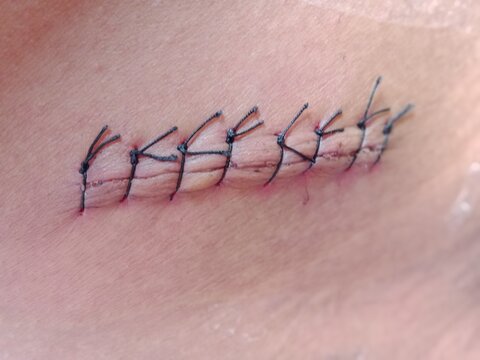For many people, the decision to Removing stitches at home in Dubai (إزالة الغرز في المنزل ) comes with a mix of convenience and concern. Once the sutures are out, the focus quickly shifts to proper aftercare. One of the most common questions patients ask is whether applying antibiotic cream is necessary after stitch removal.
This guide explores the role of antibiotic creams, when they might be useful, and how to care for your skin properly after removing stitches at home in Dubai.

Why Aftercare Matters After Removing Stitches?
Even though stitches hold the wound together during healing, once they are removed, the skin is still in a delicate phase. Proper aftercare is essential because:
- The wound remains vulnerable to bacteria and infection.
- Early care decisions influence how quickly the skin recovers.
- Good aftercare reduces the risk of permanent scarring.
Using or avoiding antibiotic cream is part of this decision-making process.
The Role of Antibiotic Cream After Stitch Removal:
When It May Be Helpful:
Antibiotic creams are designed to reduce the chance of bacterial infection by creating a protective barrier over healing skin. They may be particularly helpful in situations such as:
- If the wound is located in an area exposed to sweat or friction.
- If the environment makes hygiene more challenging, such as hot and humid weather in Dubai.
- If the wound is not fully sealed or appears irritated.
When It May Not Be Necessary?
Not every wound requires antibiotic cream. In cases where the skin has healed well, and the wound edges are closed, cleaning with mild soap and water may be enough. Overuse of antibiotic creams can sometimes cause irritation or allergic reactions.
Step-by-Step Care After Removing Stitches at Home in Dubai:
Step 1: Clean the Area Gently:
Wash the wound site with mild soap and lukewarm water. Avoid harsh scrubbing.
Step 2: Apply Antiseptic (Optional):
Dabbing a gentle antiseptic solution can further reduce bacteria before adding any cream.
Step 3: Use Antibiotic Cream (If Needed):
If you decide to use it, apply a thin layer over the wound. More is not better—a light layer is sufficient.
Step 4: Cover or Leave Open:
For the first 24–48 hours after removal, covering with a sterile bandage can help, especially if the wound is in an exposed area. Later, leaving it open to air may speed healing.
Pros and Cons of Using Antibiotic Cream:
Pros
- Helps prevent bacterial infection.
- Keeps the wound moist, which may support faster healing.
- Reduces the chance of wound reopening in some cases.
Cons
- Overuse can irritate sensitive skin.
- Some people may develop mild allergic reactions.
- Not always necessary for well-healed wounds.
Factors to Consider in Dubai’s Climate:
Dubai’s hot and humid weather can increase sweating, which may expose healing wounds to more bacteria. For this reason, some patients may benefit from using antibiotic cream after removing stitches at home in Dubai, particularly in areas prone to friction like underarms or thighs.
Common Mistakes to Avoid:
- Applying thick layers of cream, which can trap moisture and slow healing.
- Using expired or unclean tubes of cream.
- Ignoring signs of infection and relying only on creams.
- Exposing the healing wound to swimming pools or unclean water.
When to Avoid Antibiotic Cream?
If the wound is healing well, the skin looks healthy, and there are no signs of infection (such as redness, pus, or swelling), antibiotic cream may not be necessary. Simple cleaning and moisturizing may be enough.
FAQs About Using Antibiotic Cream After Stitch Removal:
Do I always need antibiotic cream after removing stitches at home in Dubai?
Not always. It depends on the condition of your wound. If it looks clean and sealed, you may not need it.
Can I use petroleum jelly instead of antibiotic cream?
Yes. Petroleum jelly helps keep the wound moist, which can reduce scarring, though it does not provide antibacterial protection.
What if I see redness after using antibiotic cream?
Stop applying it and clean the area gently. Some people may be allergic to certain ingredients.
Is it safe to apply antibiotic cream more than once a day?
Usually, applying once or twice daily is enough. Excessive use won’t speed up healing.
How long should I continue applying it?
Typically, only for a few days after removal. Prolonged use may not be necessary.
Conclusion:
Whether or not to use antibiotic cream after Removing stitches at home in Dubai (إزالة الغرز في المنزل في دبي) depends largely on the condition of your wound and your environment. While these creams can be beneficial in preventing infection and promoting healing, they are not always essential. Gentle cleaning, proper hydration, and careful monitoring are often enough to ensure safe recovery.
By understanding when antibiotic cream is useful and when it may not be, you can make informed choices that support your body’s natural healing process and reduce the risk of complications.




Comments